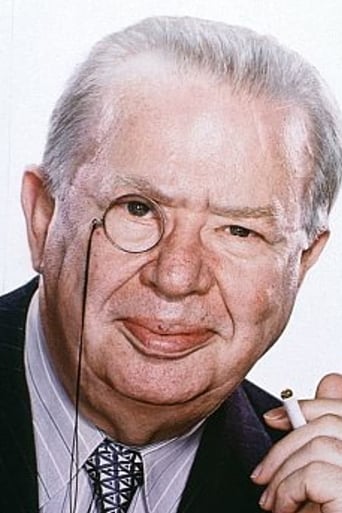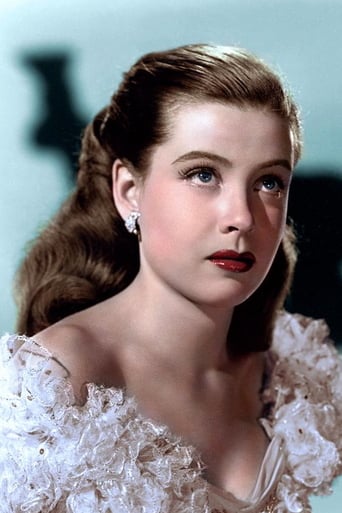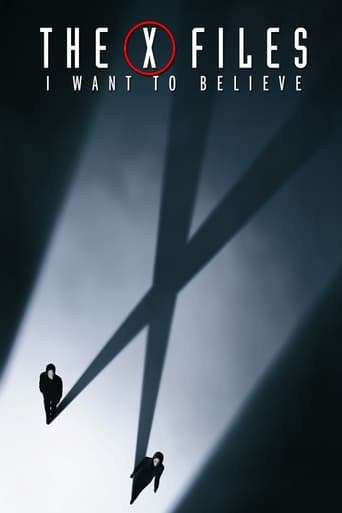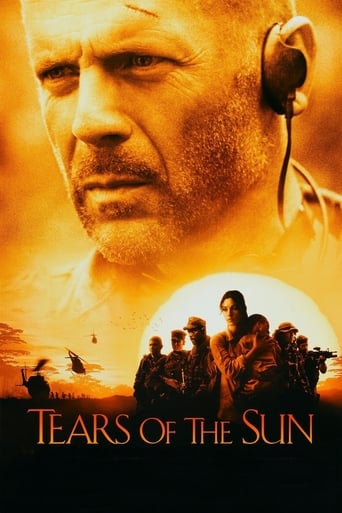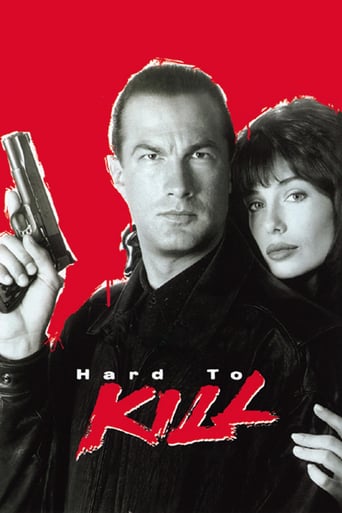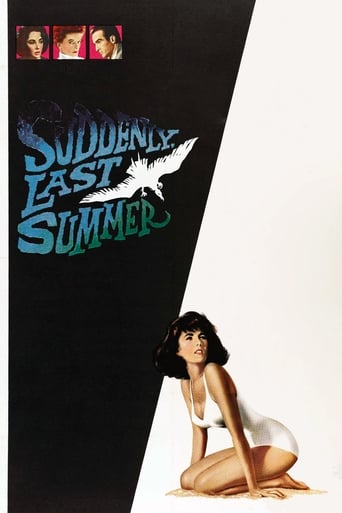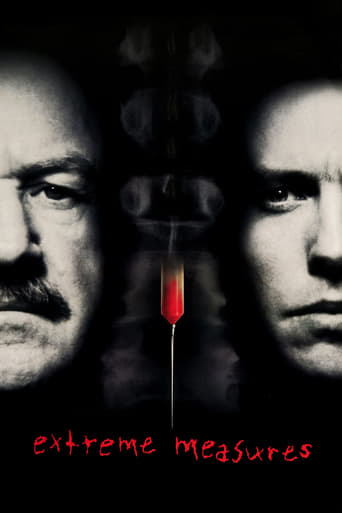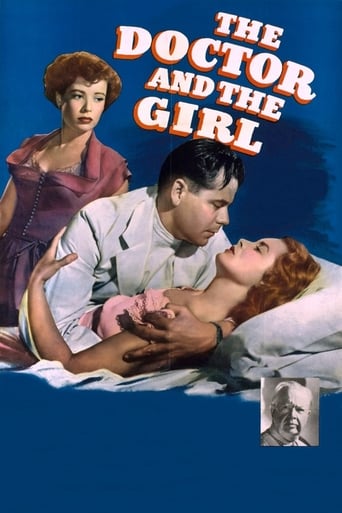
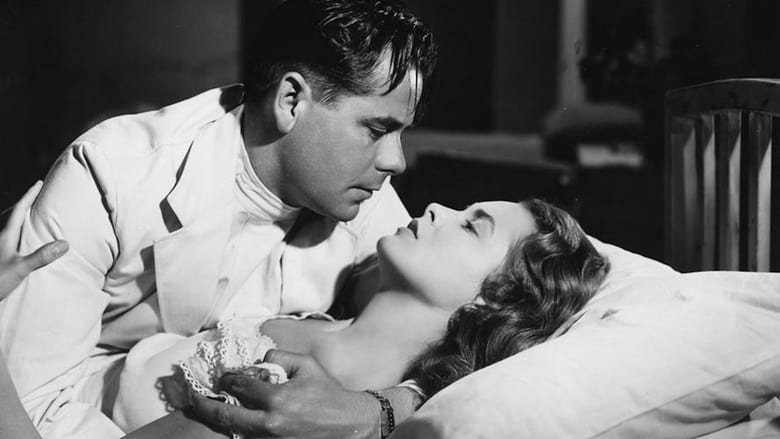
The Doctor and the Girl (1949)
Dr. Michael Corday, a recent graduate of the Harvard Medical School, is the son of Dr. John Corday, an eminent New York City surgeon who has a tendency to continue to direct the lives of his grown children. The daughter, Fabienne, runs away from home, and Michael, after first following his father's advice of being callous to the point of cruelty toward patients, changes when he falls in love with a patient, marries her and sets up his practice on the lower East Side in New York.
Watch Trailer
Cast
Similar titles
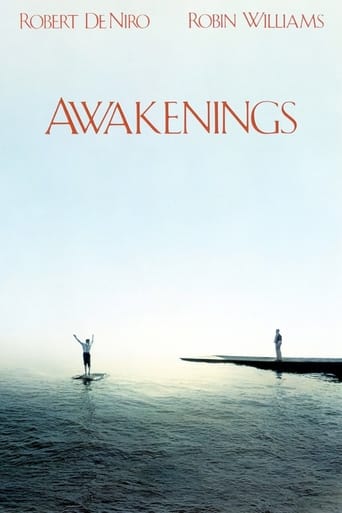
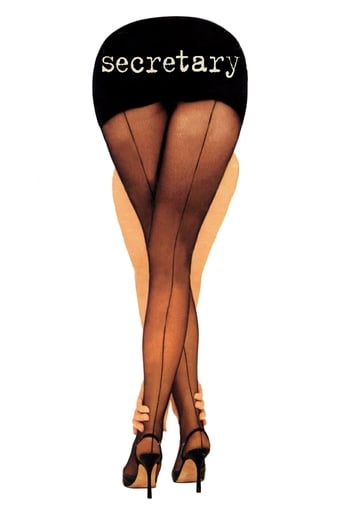
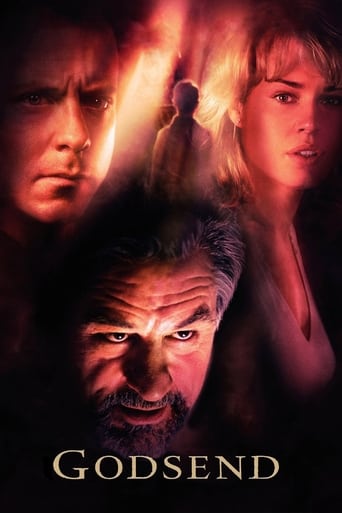
Reviews
Overrated and overhyped
Excellent but underrated film
The best films of this genre always show a path and provide a takeaway for being a better person.
An old-fashioned movie made with new-fashioned finesse.
Other reviewers of The Doctor and the Girl have rightfully praised its excellent treatment of a plot-line that at first glance seems familiar, even hackneyed. Of course, the sterling performances of everybody on screen are a huge asset to the picture. But for me, the gold medal has to be given to Curtis Bernhardt's expert handling of Theodore Reeves' adroit screenplay.It's a tightly-paced film, with very few exteriors. But Bernhardt's brilliant interiors give superb depth to each scene and each character, from stern Charles Coburn to sylphlike Janet Leigh to earnest Bruce Bennett (in a great supporting role as an unassuming ENT specialist). The director keeps everybody's performance low-key and believable. In her first scenes, sickly Janet Leigh seems to be wearing no makeup at all. And even Charles Coburn isn't allowed to milk his scenes to the limit.A master of lighting and camera angles, Bernhardt was one of the numerous excellent filmmakers in exile from Nazi Germany. His filmography is a strong one, studded with many entertaining films of the forties and fifties. Conflict, starring a quintessential Humphrey Bogart, and My Reputation with Barbara Stanwyck at her best, are two goodies that come to mind. And let's not forget Possessed, highlighted by Joan Crawford's hallucinatory performance.But unlike some other exiled directors - such as Wilder, Lubitsch, Lang and Sirk - Curtis Bernhardt hasn't got any universally acclaimed masterpieces on his résumé, so he is often neglected by movie historians. But he was certainly a talent to reckon with, and any of his pictures deserve a careful look.P.S. I totally concur with EliotTempleton's comments about Hollywood having a very long history of movies with medical themes. In fact Theodore Reeves, the main writer for this film, was the author of many medical screenplays dating back to the 1930s.
I just wanted to say that the above reviewer is a bit misinformed regarding the history of films about physicians, particularly in the '30s. There was no shortage of movies with doctors as the central character in the early sound era, and some of them are "Men in White," "Internes Can't Take Money," "The Citadel," "Strange Interlude," "Symphony of Six Million," "Arrowsmith," "Yellow Jack," "Doctor X" "The Story of Louis Pasteur," just to name a few off the top of my head, without doing any research. Paramount's "Internes Can't Take Money," starring Barbara Stanwyck and Joel McCrea, was the first movie to feature the character of Dr. James Kildare, created by author Max Brand. I'm sure that the studio's executives rued the fact that they didn't have the foresight to feature the sympathetic young doctor in a series, which is what M-G-M did, starring Lew Ayres as the compassionate and crusading Dr. Jimmy Kildare. That series, by the way, started in the '30s with "Young Dr. Kildare" in 1938, followed by "Calling Dr. Kildare" and "The Secret of Dr. Kildare" in 1939. So, you see, there were quite a few doctors gracing movie screens throughout the 1930s.
Very few films were made before the 1970s with doctors and medicine as the main subjects. Hollywood had made the jump to sound movies in 1929, but the medical profession wasn't much in the public's eye – at least not in the realm of entertainment. Two films in the 1930s were mainly about doctors and medicine – "One Man's Journey," in 1933, and "Magnificent Obsession," in 1935. Both films had major stars of the time and were successes, but their plots were very serious. Film historians have said that Hollywood thought the public was too wary of somber subjects. People living through the Great Depression, the Dust Bowl and World War II needed more light-hearted entertainment. Having fun helped take their minds off their troubles for a while. So, comedy, romance, mystery and musicals best fit the bill for the film industry at the time. But, with the end of WW II, movie interests began to expand.One of the very first films focused on doctors and medicine was this 1949 MGM movie, "The Doctor and the Girl." It may have piqued the interest in other quarters for more such stories. A British film, "White Corridors," came out in 1951, and in 1954, a remake of "Magnificent Obsession" scored another box office hit. Interest in medical heroes and plots continued to grow. A 1961 movie, "The Young Doctors," had a huge cast. That same year, the first popular daytime TV medical drama (aka, soap opera) aired. "Dr. Kildare" ran through 1966. In 1962, "General Hospital" premiered. In 2013, the Guinness Book of World Records lists it as the longest-running American soap, and it's still going strong. Only two other TV series have gone longer, but both are now off the air. By the 1970s, the medical field began to emerge as a major sub-genre for films and TV programs. Shows ranged from drama to comedy, romance to crime and mystery, war to sci-fi, and even horror scripts. With new TV programs and films about doctors and medicine today, the very earliest movies still stand out for their excellent stories and performances by top casts. "The Doctor and the Girl" is such a film. The plot may seem to be so familiar today, but it wasn't at the time. Indeed, it was a leader in showing conflict between "high brow" medicine and that practiced for common folks. The performances by the stars are outstanding – Glenn Ford, Janet Leigh, Charles Coburn, Gloria De Haven, Bruce Bennett, and Basil Ruysdael. This is a movie worthy of any film library.
In The Doctor And The Girl Harry Cohn decided to sell off half of Glenn Ford's contract to MGM for his services as half of the title of the film. It was the same kind of deal Cohn had with William Holden when he bought half of Holden's contract with Paramount. Now Ford would serve two studios and for loanouts in the future he'd have to have his schedule with both MGM and Columbia clear.I hope you all that Ford was the doctor part of the title role. The girl is Janet Leigh, but there are two other prominent female roles and they play Ford's sisters, Gloria DeHaven and future first Lady Nancy Davis. They're all Charles Coburn's children and he's a prominent doctor.Who has every expectation of seeing his son follow in his footsteps and he lays down the law to everyone else be they his children or his colleagues. The youngest Gloria DeHaven rebels, but in very unhealthy ways. Nancy has married a doctor herself in the person of Warner Anderson, but Anderson is determined to succeed as a pediatrician on his own thank you very much without Coburn's help.But Ford starts off as a chip off the old arrogant block, but after some time working in Bellevue the arrogance flakes off, especially after meeting patient Janet Leigh who is in for some surgery. She's alone in the big city until Ford enters her life.And Coburn doesn't consider her a suitable candidate for being a doctor's wife. That and his attitude towards his kids in general sets off the plot events in The Doctor And The Girl. He's a tyrannical old cuss, very typical of some of the parts he's played.Though Glenn Ford had been making movies, mostly at Columbia for ten years he was new to the MGM studio. As was Janet Leigh. The film was shot on location in New York City. I recognize the facade of Bellevue Hospital, nothing much has changed their in 60 years. Of course if the camera were turned to the other side of the street on First Avenue, a great deal has changed.And as for the disparaging remarks about the working class area of Third Avenue where Janet Leigh lives and to where Ford moves when he marries her, that is some of the most expensive real estate in the world. The cost of their apartment in that same general location would boggle the mind.Ford and Leigh were fairly new, but for Nancy Davis this was her second film and first speaking role. It was definitely no acting stretch because in real life she was the daughter of a rich and prominent physician, Dr. Loyal C. Davis of Chicago. I'll bet Dr. Davis was a whole lot like Charles Coburn in manner. He was definitely his daughter's mentor in politics and also a mentor for his son-in-law our 40th President.There are two other roles of prominence, Bruce Bennett has a very nice role as Ford's supervisor at Bellevue, he was an army doctor in the second World War and he's a bit put out with Ford's vaunted connections and let's him know it. And Basil Ruysdael is in a part that fits him perfectly the wise old family friend to Coburn and his clan. Ruysdael is also a doctor, a most prominent surgeon.The Doctor And The Girl is a good addition to the roll of medical dramas. It's not all that different from what folks would be seeing soon on the small screen with Medic, Dr. Kildare, and Ben Casey. And remember this is MGM the people who did produce the Dr. Kildare series for the big screen.

